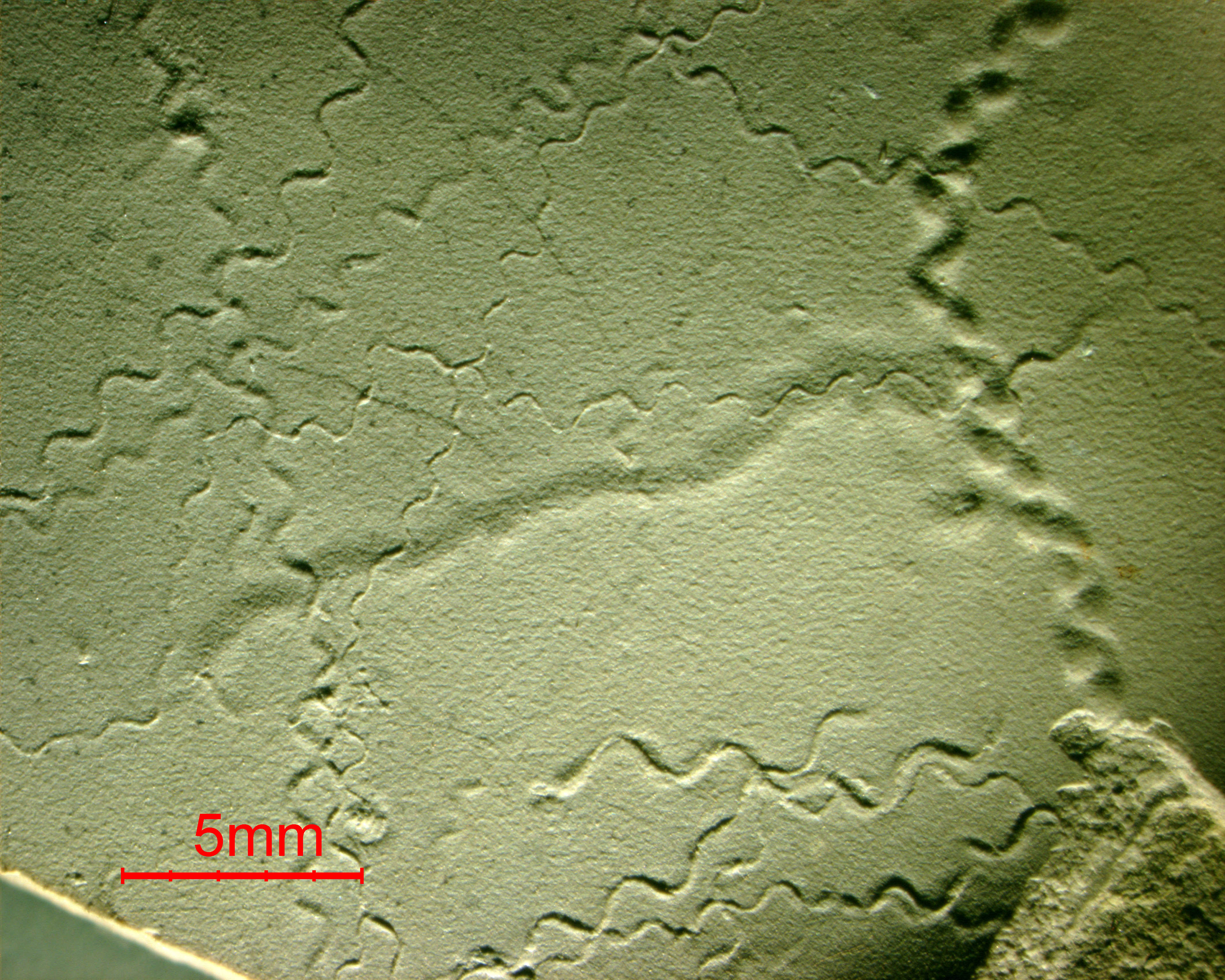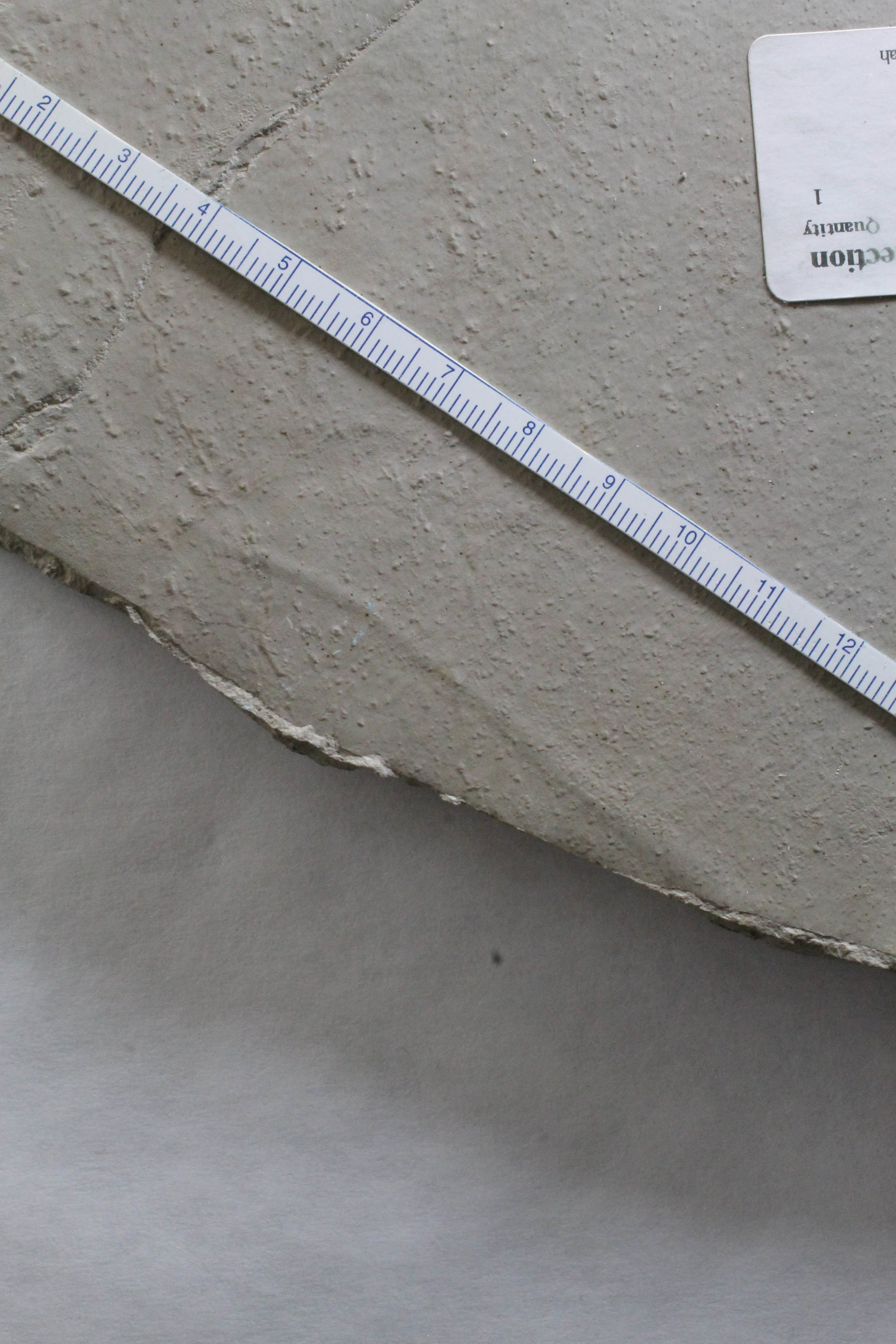Planolites Nicholson, 1873
DESCRIPTION: Simple, unlined, unbranched cylindrical or subcylindrical infilled burrows, straight to gently curved, horizontal to oblique to bedding planes. Burrows may cross-over. Lithology of fill differs from that of host rock.
BEHAVIOR(S): Fodinichnia (deposit feeding), domichnia (dwelling).
ENVIRONMENTAL SETTINGS: Shallow marine - deep marine deposits to continental terrestrial and aquatic; in alluvial, lacustrine, and eolian settings.
POSSIBLE TRACEMAKERS: Various invertebrate burrowing organisms including worms and arthropods ( e.g., spiders, insects).
GEOLOGIC RANGE: Precambrian-recent.
ADDITIONAL REFERENCES: Hantzschel, 1975, Pemberton and Frey, 1982, Fillion and Pickerill, 1990, Buckman, 1995, Keighley and Pickerill, 1995, Uchman, 1998, Ekdale et al., 2007
REMARKS: Often difficult to distinguish between Palaeophycus, a passively filled burrow, from Planolites, a burrow formed by active backfill that may be of similar size, shape and orientation (Pemberton and Frey, 1982; Buckman, 1995; Keighley and Pickerill, 1995).



